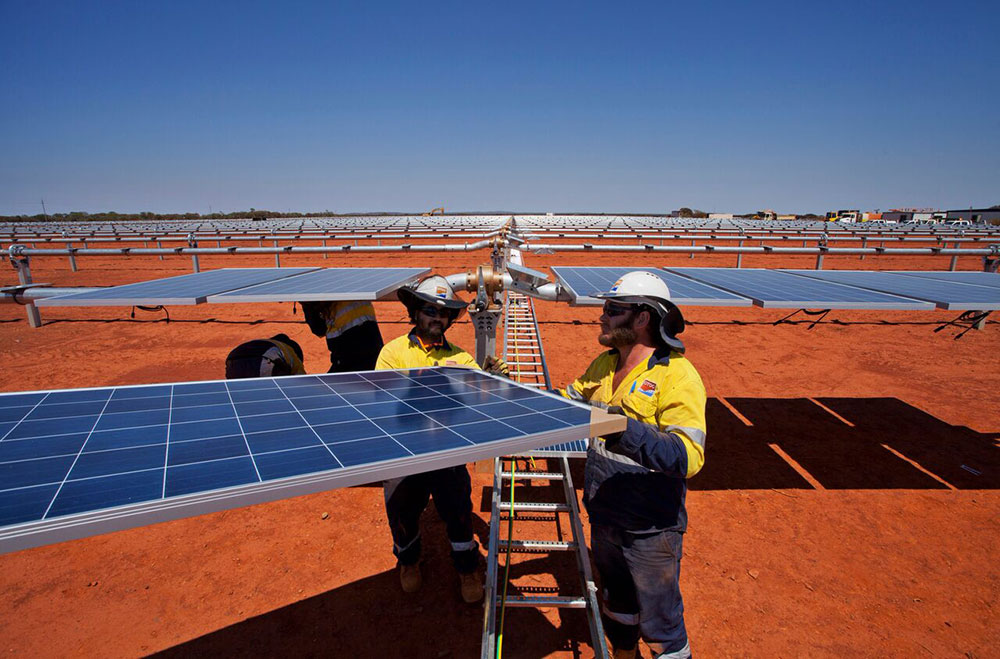Australia is proving to be the ideal marketplace for suppliers of single-axis solar tracking technology. Rystad Energy has published a striking take away from its ongoing (ahem) tracking of the large scale solar market segment finding that of the 33 GW of projects it is currently monitoring, 83% of them intend to deploy tracking.
In terms of firmer numbers, Rystad tallies 2.8 GW of trackers either already deployed in completed projects or as confirmed orders to suppliers. This is an expansion of 117 MW of tracking capacity installed by the end of 2016.
Despite the stellar growth of tracking in Australia, tracker supply remains concentrated. 90% of current orders, finds Rystad, have been placed either with Nextracker or Array Technologies – the two being U.S. suppliers.
While both single-axis suppliers, the two companies’ technologies differ significantly. Nextracker utilizes what is called a decentralized architecture, with individual tracker rows powered by powered by a mini PV module and battery, while Array’s system is centralized, with many rows driven by a single linked, rotating drive line.
Rystad Energy reports that Nextracker is currently market leader in Australia with an order book of 1.4 GW, with Array next with 1.1 GW. Despite this present domination by the two tracker leaders, Rystad tips other suppliers to gain traction in the market.
In his May newsletter, Senior Analyst with Rystad Energy Ben Willacy expands: “Several global players are present in the Australian market, and while their portfolios are currently small compared to the market leaders, they are pursuing growth. NCLAVE, PV Hardware, Soltec, Exosun and Sunpower have all supplied operating assets or have confirmed projects under construction or close to it.”
For the smaller suppliers to close deals in Australia, Willacy believes that they must be both competitive on price, but also must “overcome strong existing relationships” between tracker suppliers and EPCs.
“So far, EPC companies have shown a high degree of allegiance to their chosen tracking manufacturer,” writes Willacy. “Of the 13 EPC companies which have won projects in Australia involving single-axis tracking, only three have used multiple tracker brands across their various jobs.”
Willacy concludes that there “may be” 14 GW of projects suitable for tracking currently up for grabs in the Australian marketplace.
In its Global Solar PV Tracker Market Shares and Shipments 2018 report, GTM Research found that 90% of PV power plant projects completed in Australia in 2017 deployed tracking – totalling 1.4 GW of capacity.
This content is protected by copyright and may not be reused. If you want to cooperate with us and would like to reuse some of our content, please contact: editors@pv-magazine.com.









By submitting this form you agree to pv magazine using your data for the purposes of publishing your comment.
Your personal data will only be disclosed or otherwise transmitted to third parties for the purposes of spam filtering or if this is necessary for technical maintenance of the website. Any other transfer to third parties will not take place unless this is justified on the basis of applicable data protection regulations or if pv magazine is legally obliged to do so.
You may revoke this consent at any time with effect for the future, in which case your personal data will be deleted immediately. Otherwise, your data will be deleted if pv magazine has processed your request or the purpose of data storage is fulfilled.
Further information on data privacy can be found in our Data Protection Policy.